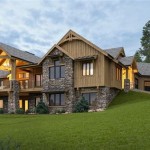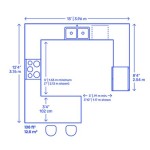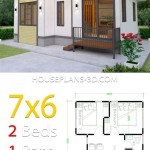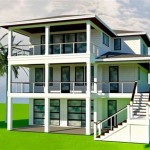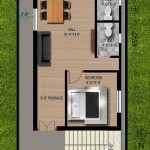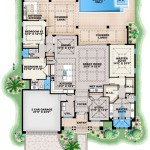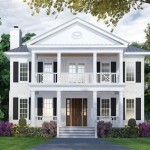Free Plans for Bluebird Houses: A Guide to Building a Bird-Friendly Habitat
Attracting bluebirds to a backyard requires providing them with suitable nesting locations. Bluebirds are cavity nesters, meaning they prefer to build their nests in enclosed spaces like tree cavities. However, natural cavities have become increasingly scarce due to habitat loss and competition from other birds and animals. Offering bluebird houses can significantly improve their nesting success and contribute to their conservation.
Fortunately, constructing a bluebird house is a relatively straightforward project. A plethora of free plans are available online, catering to varying skill levels and resource availability. Accessing and utilizing these plans allows individuals to actively participate in providing essential shelter for this beneficial bird species. This article details essential factors to consider when selecting and utilizing free bluebird house plans, outlining key design features and construction techniques that contribute to a successful and long-lasting bluebird habitat.
Key Point 1: Understanding Essential Bluebird House Design Features
Bluebirds are particular about their nesting sites, and certain design features are crucial for attracting them and ensuring the safety of their young. Neglecting these features can result in the house being ignored or, worse, attracting unwanted predators or competitors. Therefore, carefully reviewing plans and paying close attention to the following details are paramount.
Entrance Hole Size: The diameter of the entrance hole is arguably the most critical aspect of a bluebird house. A hole size of exactly 1 ½ inches is ideal for Eastern Bluebirds. This size allows bluebirds to enter while deterring larger, more aggressive birds like European Starlings, which often outcompete bluebirds for nesting sites. Some plans might recommend a slightly smaller hole (1 9/16 inches) to further discourage starlings. Adherence to the recommended hole size is non-negotiable for a successful bluebird house.
House Dimensions: The interior dimensions of the house provide the necessary space for the bluebird family. A floor size of approximately 5x5 inches or 6x6 inches is sufficient. The height from the floor to the bottom of the entrance hole should be around 6-8 inches. This provides adequate depth for the nest and helps protect the young from predators reaching in. Shallow houses are more vulnerable to predators like raccoons.
Roof Slope and Overhang: A slightly sloping roof is essential for water runoff, preventing rain from pooling inside the house. An overhang of at least a couple of inches beyond the front of the house protects the entrance hole from rain and direct sunlight. This helps regulate the temperature inside the house, which is crucial for the survival of the nestlings.
Ventilation and Drainage: Proper ventilation is necessary to prevent overheating inside the house, especially during hot weather. Small ventilation holes drilled near the top of the sides of the house allow for air circulation. Drainage holes drilled in the floor allow water to escape, preventing the nest from becoming waterlogged. These seemingly minor details can significantly impact the health and survival of the bluebird chicks.
Ease of Cleaning: Regularly cleaning a bluebird house after each nesting season is vital to remove old nesting material and parasites. A design that allows for easy opening, such as a hinged roof or a side panel that can be easily removed, is essential. Neglecting to clean the house can make it less attractive to bluebirds and increase the risk of disease.
Material Selection: Untreated wood, such as cedar, redwood, or pine, is the best choice for building a bluebird house. These woods are naturally durable and resistant to rot. Avoid using pressure-treated wood, as the chemicals used in the treatment process can be harmful to birds. Exterior grade plywood can also be used, but it should be sealed with a non-toxic, water-based sealant to prolong its lifespan. The use of paints and stains should be limited to the exterior of the box and should be non-toxic and light in color to reflect heat.
When assessing free plans, look for those that explicitly address these essential design features. Plans that are unclear or vague in these areas should be avoided in favor of more detailed and comprehensive options.
Key Point 2: Locating and Interpreting Free Bluebird House Plans
A multitude of websites and organizations offer free bluebird house plans. However, the quality and completeness of these plans can vary significantly. Identifying reliable sources and understanding how to properly interpret the plans are crucial steps in ensuring a successful construction project.
Reliable Sources for Plans: Reputable sources of free bluebird house plans include: *
The North American Bluebird Society (NABS):
NABS is a leading authority on bluebird conservation and offers scientifically vetted plans on their website. These plans are often considered the gold standard for bluebird house design. *State Wildlife Agencies:
Many state wildlife agencies provide free bluebird house plans specific to their region. These plans may be tailored to local bluebird populations and environmental conditions. *University Extension Services:
Extension services affiliated with universities often offer plans and resources related to wildlife conservation, including bluebird houses. *Audubon Societies:
Local Audubon societies sometimes offer plans or workshops on building bluebird houses. *Reputable Online Woodworking Sites:
Several woodworking websites offer free plans, but it is important to review the plans carefully and ensure they incorporate the essential design features mentioned earlier.Interpreting Bluebird House Plans: Once a plan has been selected, careful interpretation is necessary before commencing construction. *
Review the Materials List:
Ensure that you understand the type and quantity of materials required. Note the dimensions of each piece of wood and plan accordingly. *Study the Diagrams:
Carefully examine the diagrams to understand how the different pieces of wood fit together. Pay attention to angles, measurements, and the location of holes for screws or nails. *Read the Instructions Thoroughly:
The instructions should provide a step-by-step guide to constructing the house. Read them carefully and ensure that you understand each step before proceeding. *Double-Check Measurements:
Before cutting any wood, double-check all measurements to ensure accuracy. Even small errors can lead to problems later in the construction process. *Consider Modifications:
While it is generally best to follow the plan closely, it may be necessary to make minor modifications to accommodate available materials or personal preferences. However, avoid altering critical design features such as the entrance hole size or the overall dimensions of the house.Before committing to a specific plan, it is beneficial to compare multiple options. Look for consistency in the recommended dimensions and features across different plans from reputable sources. If discrepancies exist, research the reasons behind the differences to determine which plan is most appropriate for your region and the specific needs of your local bluebird population.
Key Point 3: Best Practices for Bluebird House Installation and Maintenance
Building a bluebird house is only the first step in attracting bluebirds. Proper installation and ongoing maintenance are equally important for maximizing the chances of success. Incorrect placement or neglect can render even the best-designed house ineffective.
Site Selection: Choosing the right location for the bluebird house is critical. Bluebirds prefer open areas with scattered trees or shrubs. Avoid placing the house in heavily wooded areas or near dense vegetation. A location with a clear flight path to the entrance hole is essential. Mounting the house on a pole in an open field is often ideal.
Mounting Height and Direction: The recommended mounting height is between 5 and 10 feet above the ground. The direction the house faces is also important. Ideally, the entrance hole should face east or southeast, away from prevailing winds and hot afternoon sun. Consider local weather patterns when deciding on the orientation of the house.
Predator Deterrents: Protecting the bluebird house from predators is essential for the safety of the nestlings. Various predator guards can be used to deter snakes, raccoons, and cats. These guards can be as simple as a conical baffle placed below the house on the mounting pole or more elaborate cage-like structures that surround the house. Regularly inspecting the house and predator guards for damage is crucial.
Monitoring and Cleaning: Regularly monitoring the bluebird house during the nesting season (typically from spring to late summer) allows you to track the progress of the nesting birds. Avoid opening the house unnecessarily, as this can disturb the birds. However, checking the house periodically to ensure that it is free of pests and that the nest is healthy is important. After each nesting season, the house should be thoroughly cleaned to remove old nesting material and parasites. This helps ensure that the house remains attractive to bluebirds in subsequent years.
Dealing with Unwanted Occupants: Occasionally, other birds or animals may attempt to nest in the bluebird house. House Sparrows are a common competitor that can be particularly aggressive towards bluebirds. If House Sparrows are present, it is generally recommended to remove their nests regularly. However, native species should not be disturbed without proper consideration and legal compliance. Consulting with local wildlife experts can provide guidance on managing unwanted occupants without harming protected species.
By paying attention to these installation and maintenance practices, individuals can significantly increase the likelihood of attracting bluebirds to their backyard and providing them with a safe and suitable nesting habitat. The combination of a well-designed house, proper placement, and diligent maintenance is essential for successful bluebird conservation efforts.

Pin Page

Creating Bluebird Habitat Free House Plans

Bluebird House Plans Free Construct101

Pin Page

Plans Birdhouse For Bluebirds Grinder Jig

Bluebird Birdhouse Plans Complete Step By Instructions For Building A Bird House

Birdhouse And Nest Box Plans For Several Bird Species The Birders Report

Eastern Bluebird Birdhouse 70birds Plans Index

Bluebird Birdhouse Plans Complete Step By Instructions For Building A Bird House

Bluebird House Plans Free Construct101
Related Posts

